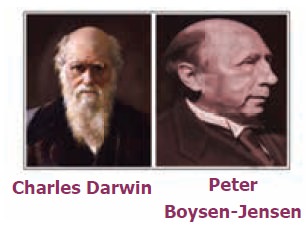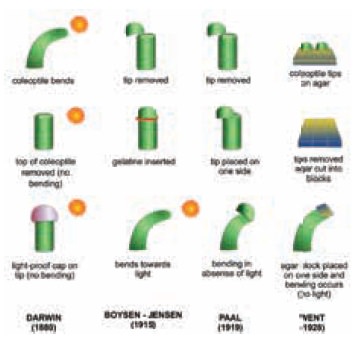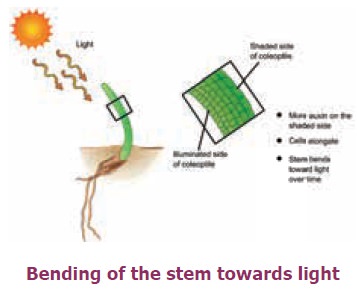Chapter: 9th Science : Living World of Plants - Plant Physiology
Do Plants Actually Sense Light?
Do Plants Actually Sense Light?
You would have studied in earlier classes about
seed germination. In monocot plants like grass, there is only one first leaf
(called cotyledon). Once germinated, the embryo sends a primary root downward
into the soil and pushes the primary shoot to the soil surface. The tip of the
embryonic shoot (plumule) is covered by a protective sheath called coleoptile.
It is the coleoptile covered embryonic shoot that grows above the ground.
In one of the experiments initially Darwin noticed
that germinated seeds also grow towards light. If, in a dark room light is
placed in one end, the growing seedlings bend towards the light. In the next
experiment, he carefully removed the tip from growing seedlings. The shoot did
not bend towards the light. When he covered the tip (Coleoptile) with foil,
preventing light from entering, the shoot did not bend. In the next step, he
covered the elongating part of the shoot, but le the tip open. Now the bending
could be noticed. Covering the elongating part of the shoot did not a ect the response
to light at all! Darwin concluded “some ‘in
uence’ is transmitted from the tip to the more basal regions of the shoot
thereby regulating growth and inducing curvature”. is demonstrated clearly that
something within the tip of the coleoptile controlled growth of the plant.

What is this influence?
In 1913 Peter Boysen-Jensen, a Danish Botanist further developed Darwin’s
experiments. He found that if he removed the coleoptiles, plant growth stopped.
Then he inserted a piece of agar and then placed the coleptile on top of it the
plant again was able to curve towards the light. Hence this chemical was
predicted to be water soluble. He reasoned that chemicals that controlled the
light sensitive movement (phototropism) moved through agar.

In his next experiment he replaced the agar block
with butter. The above mentioned water soluble chemical did not dissolve in
butter, as expected the chemical did not pass through butter. is water soluble
“in uence” was later identi ed as the plant hormone Auxin. In response to light, auxin elongates the cells on the dark side of a stem so that the plant literally
bends towards the light source.

Related Topics